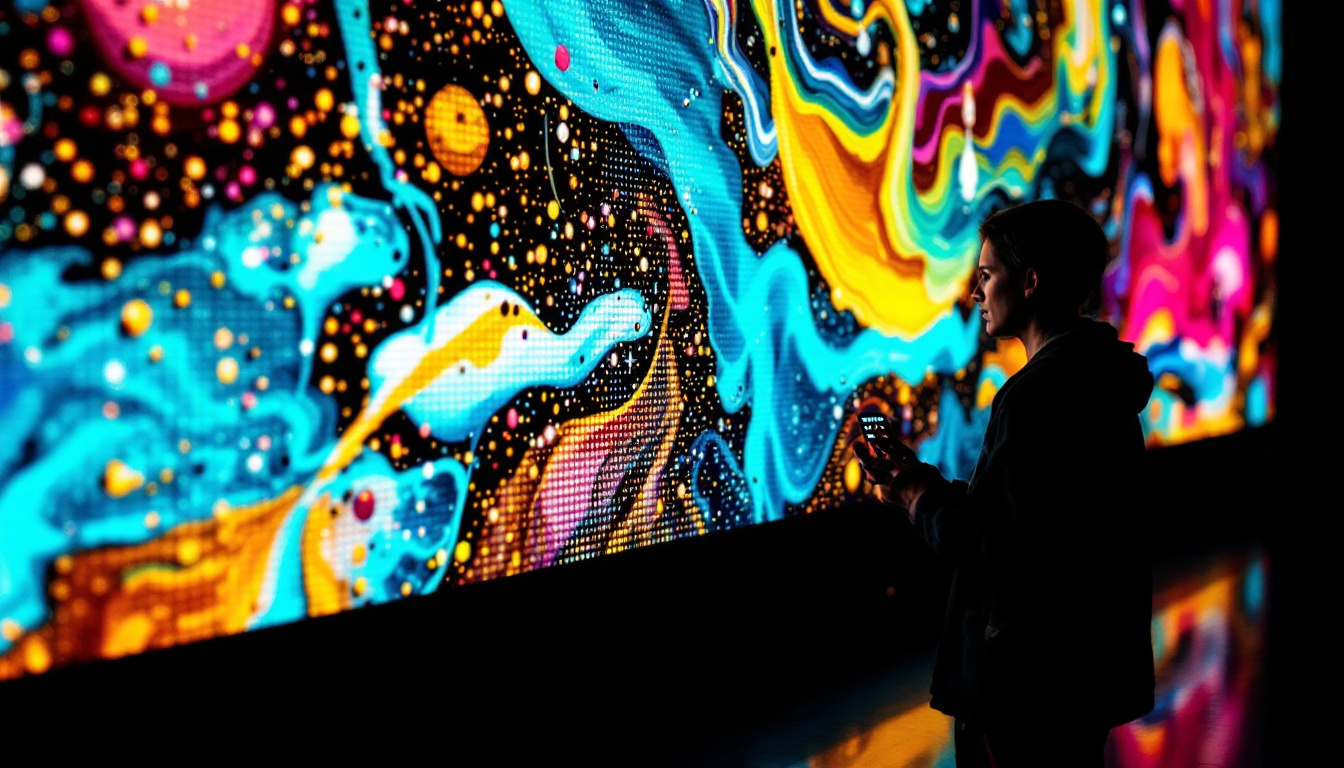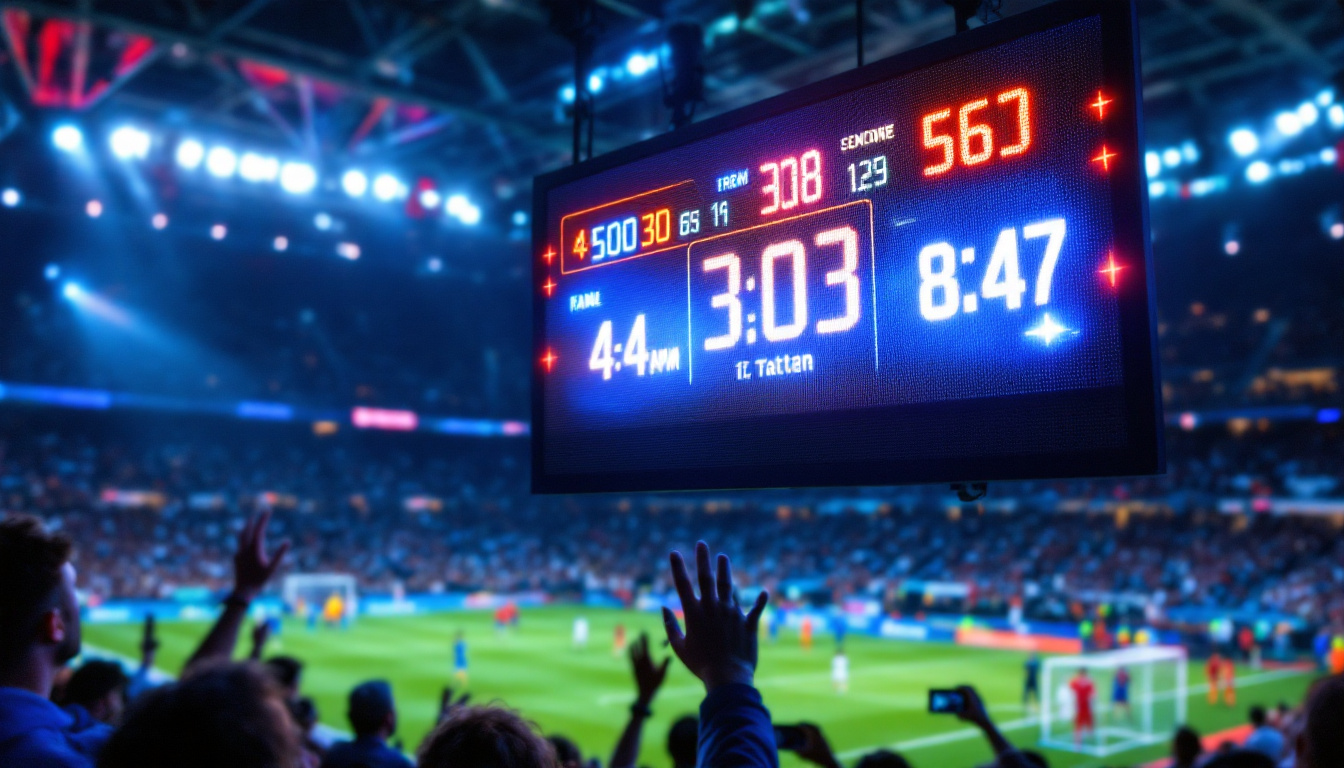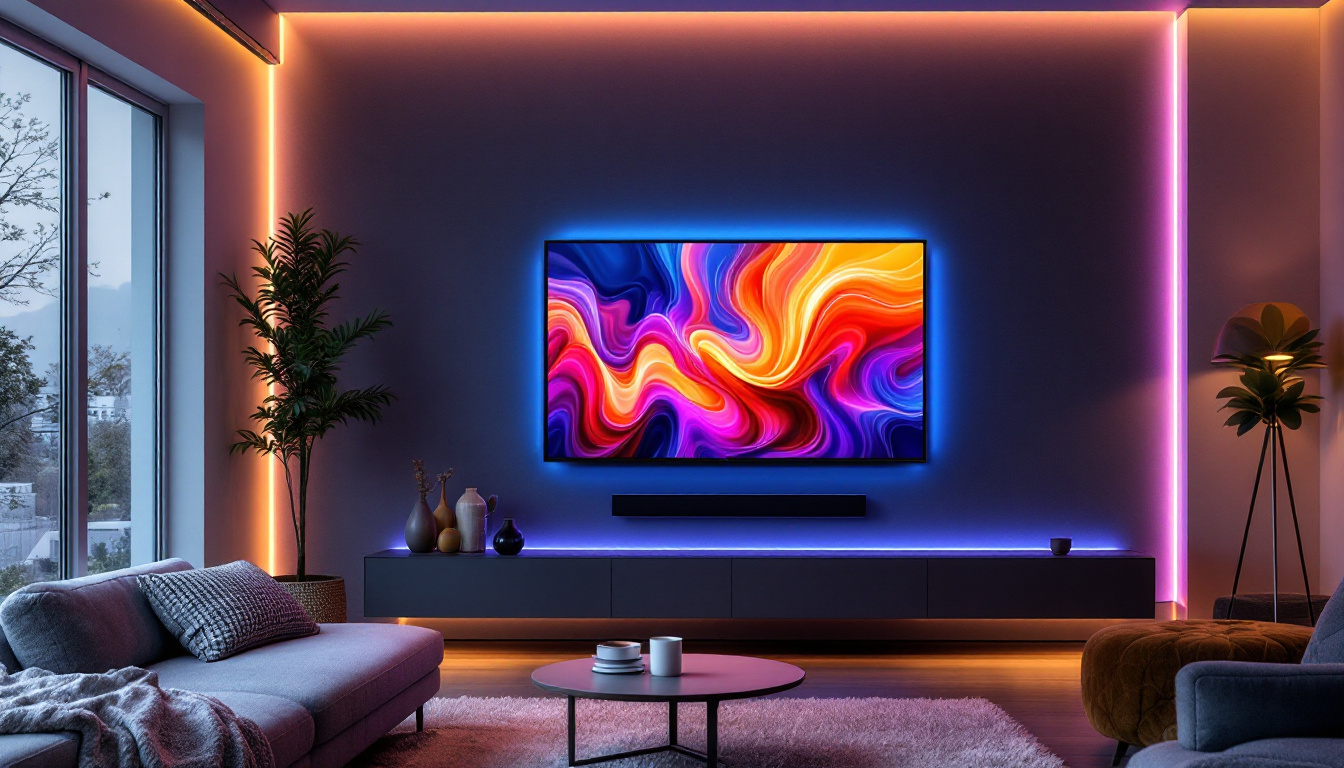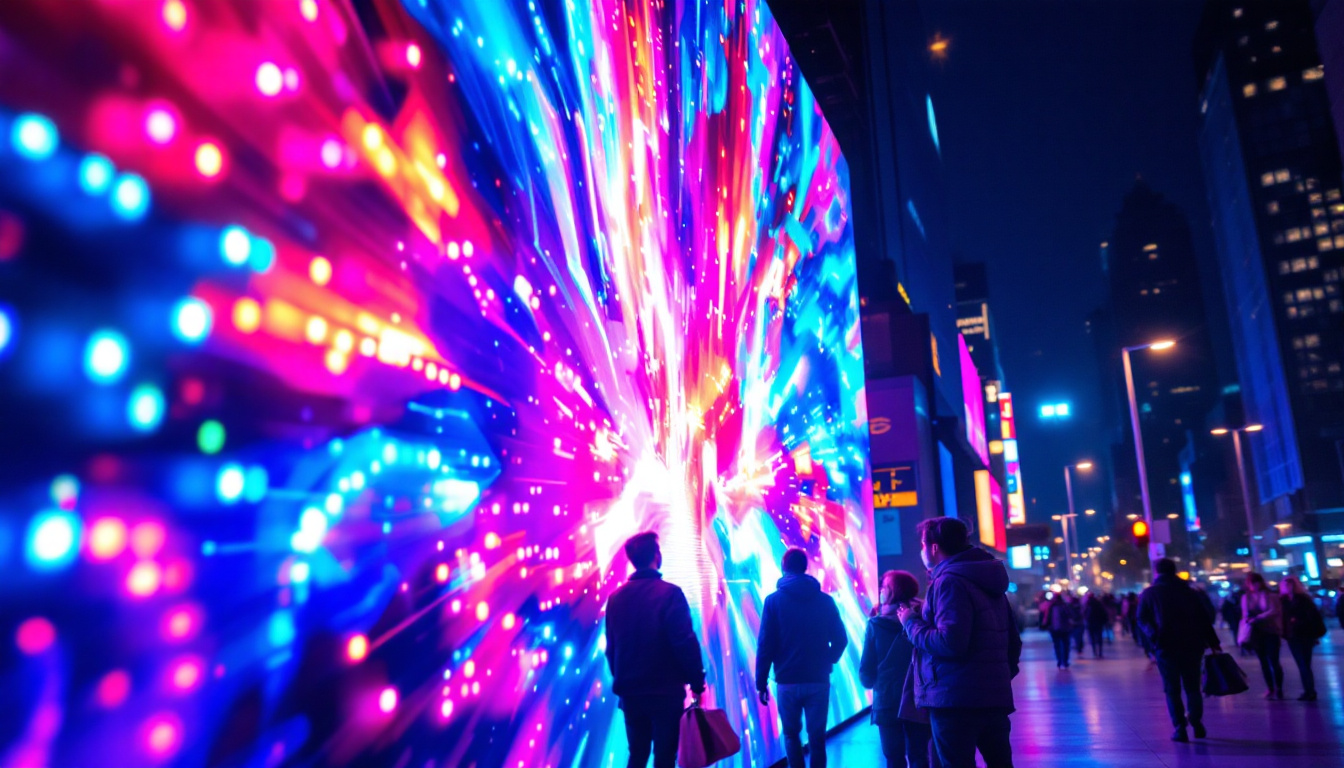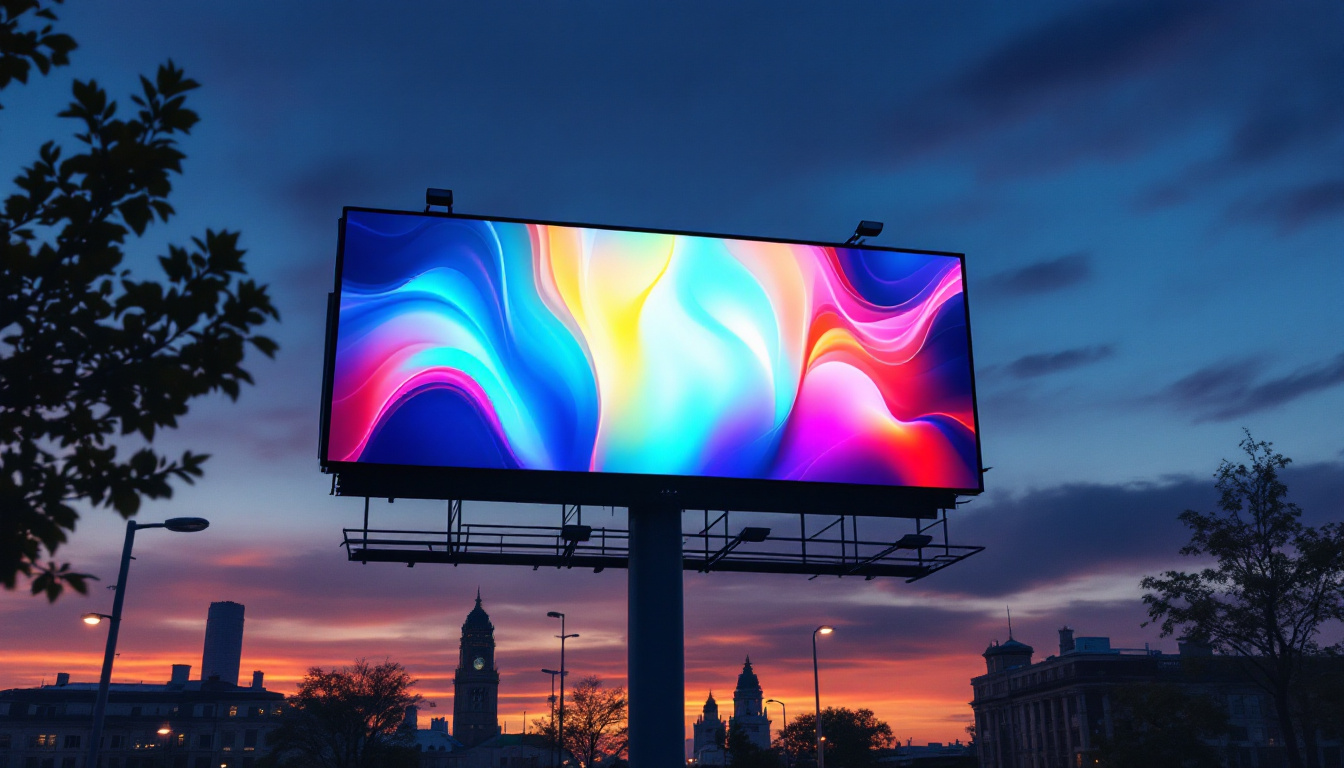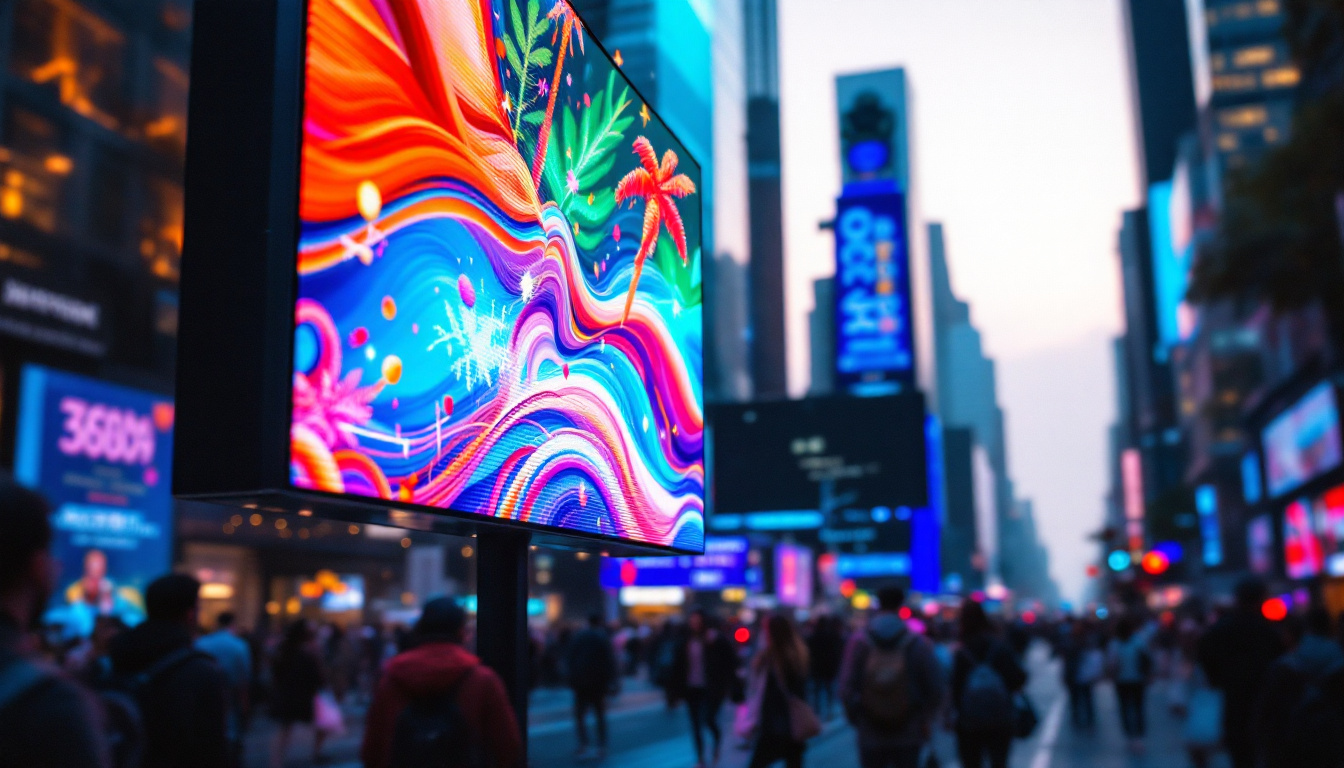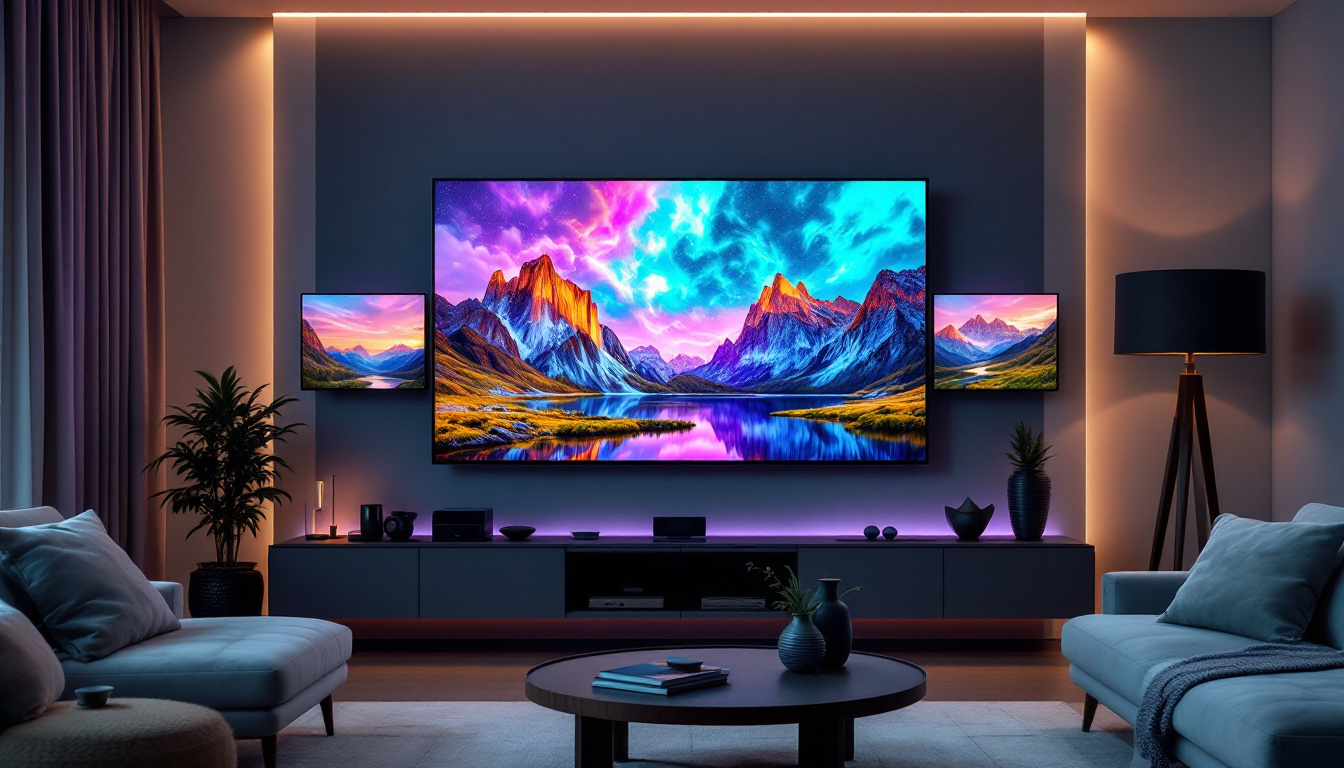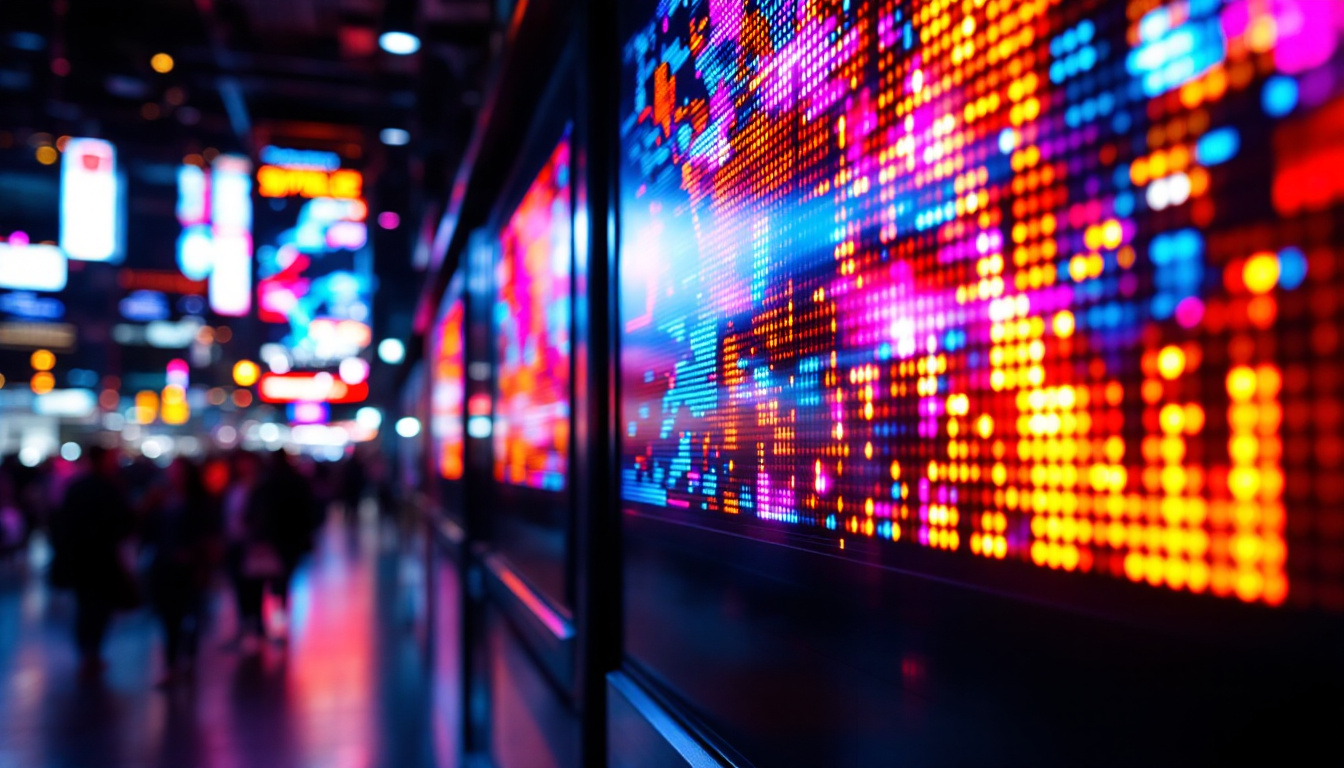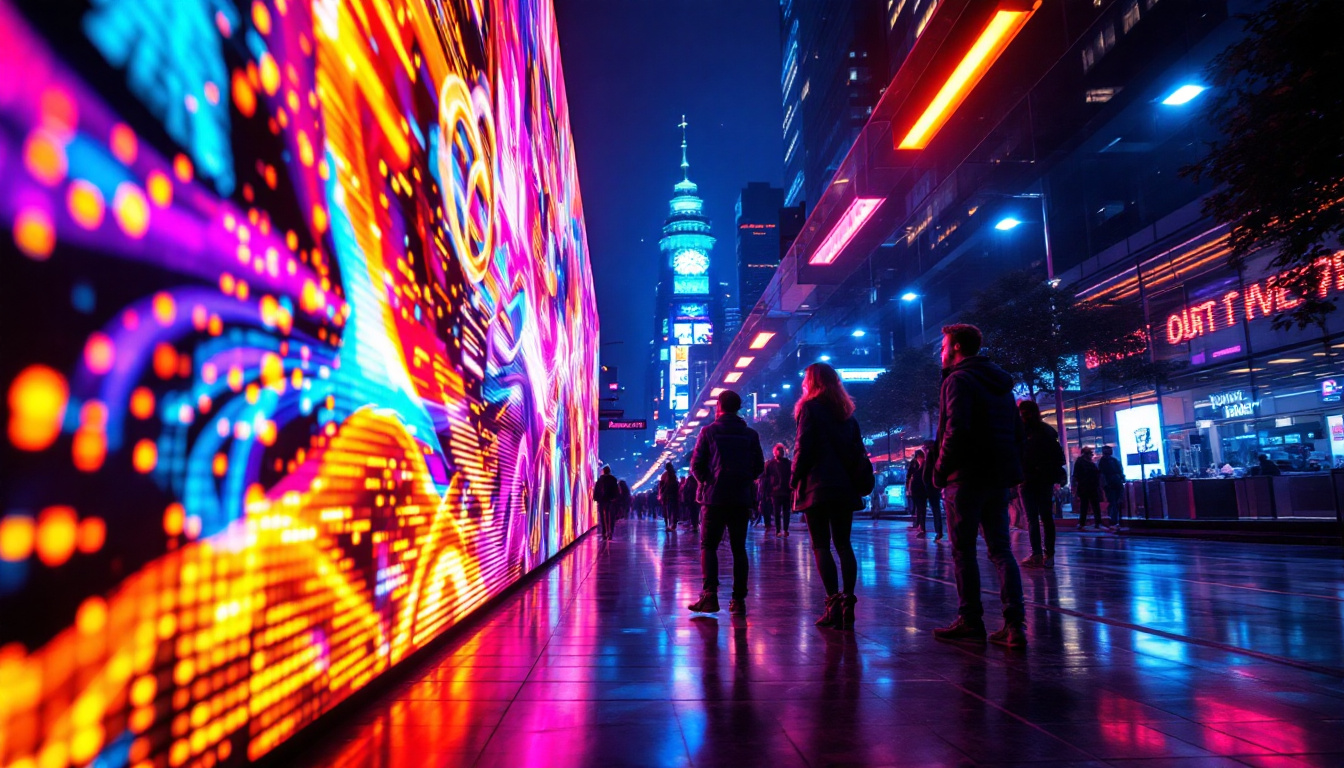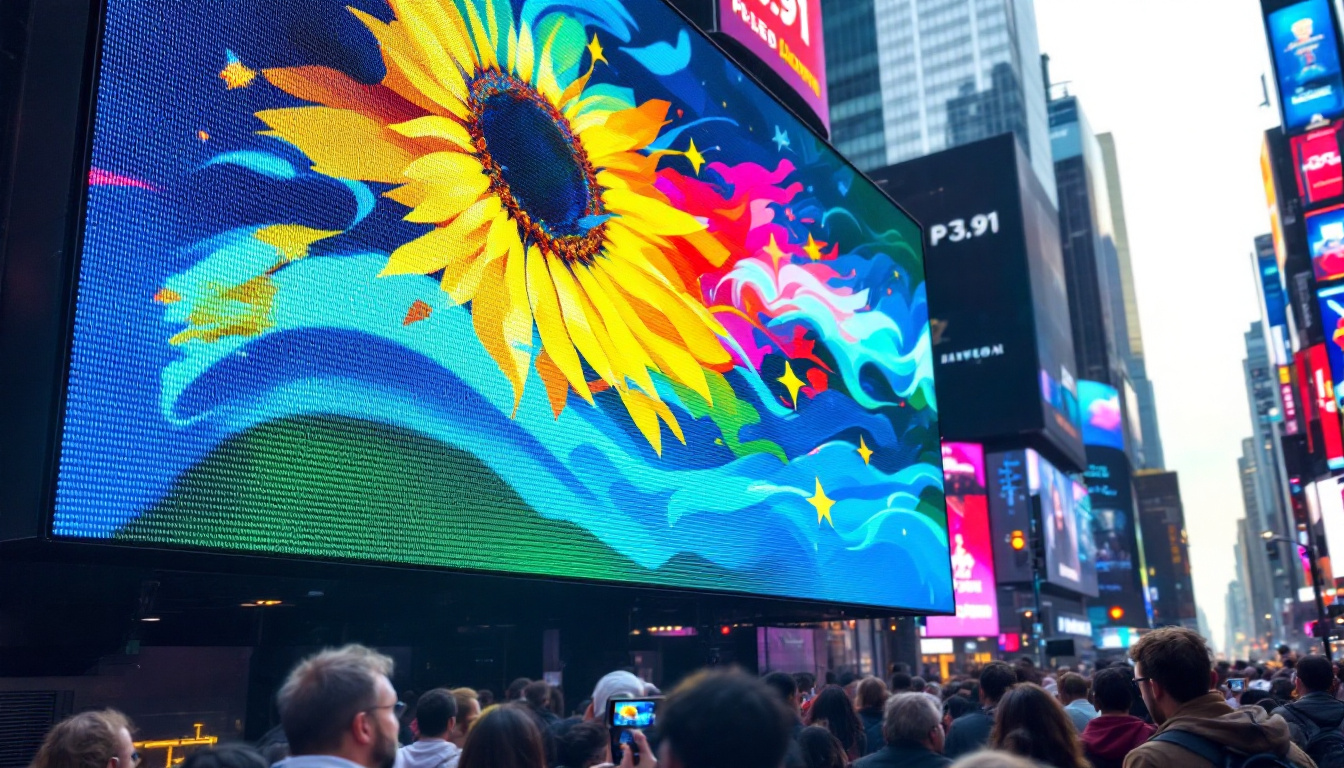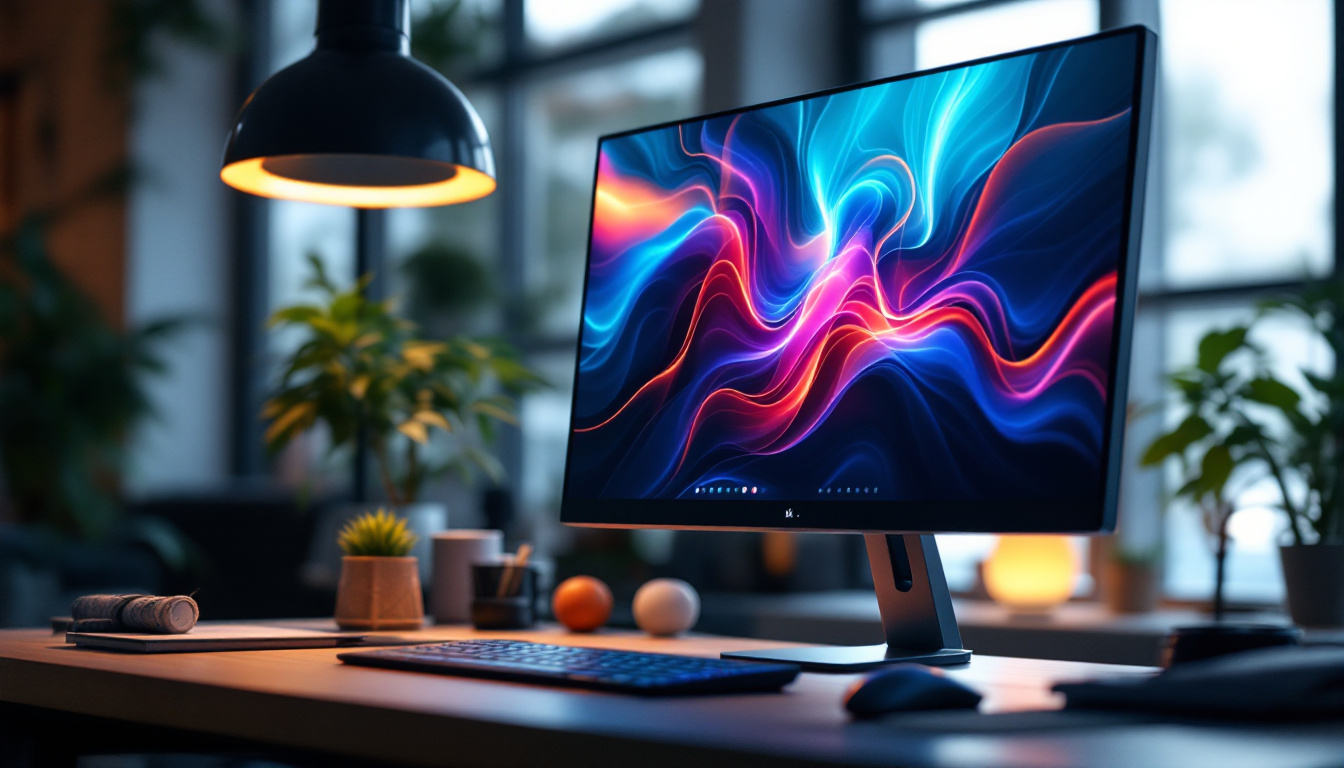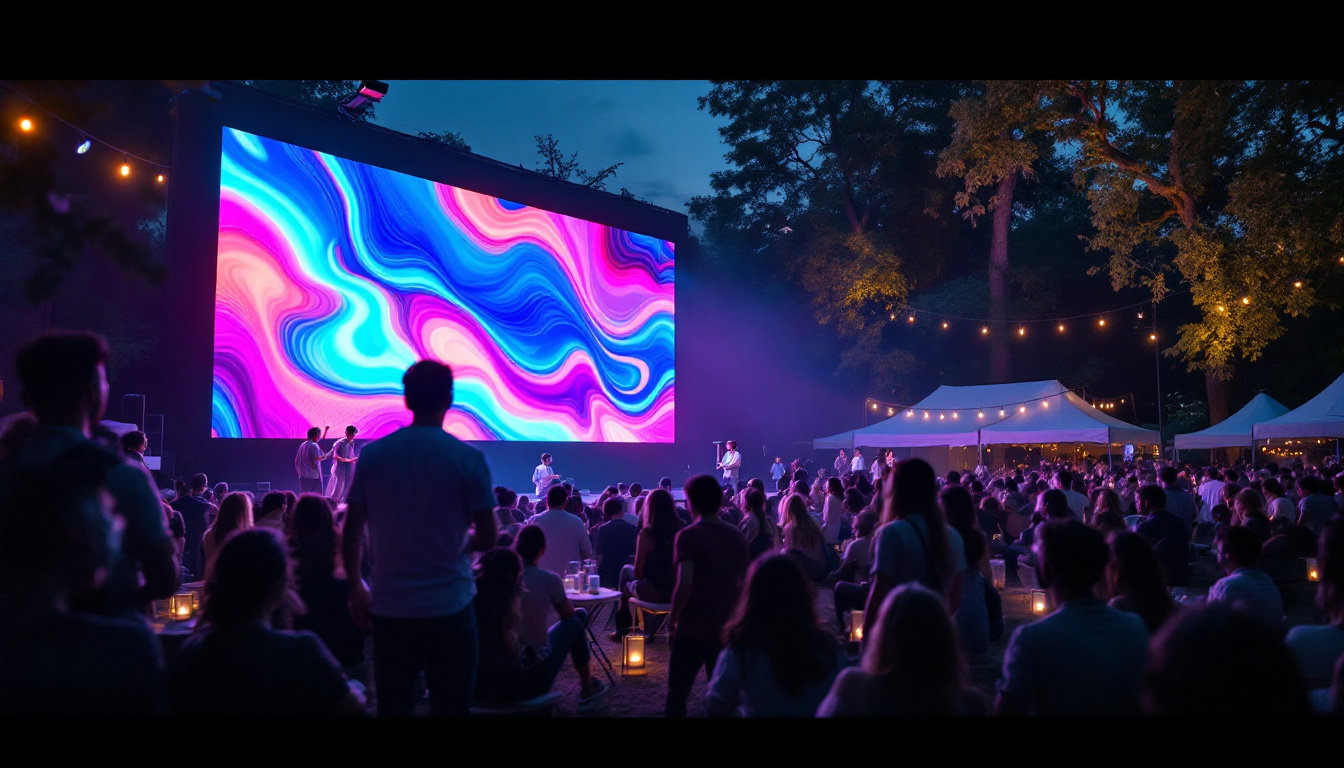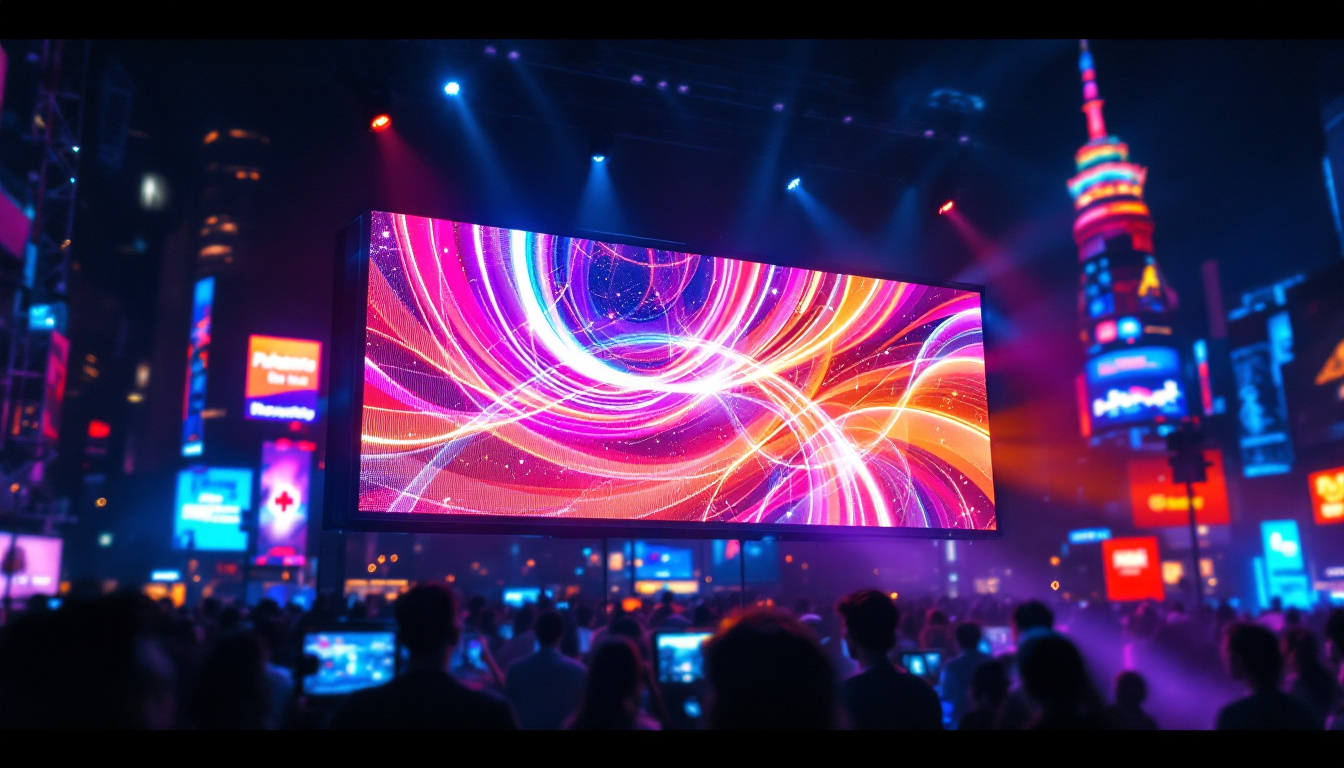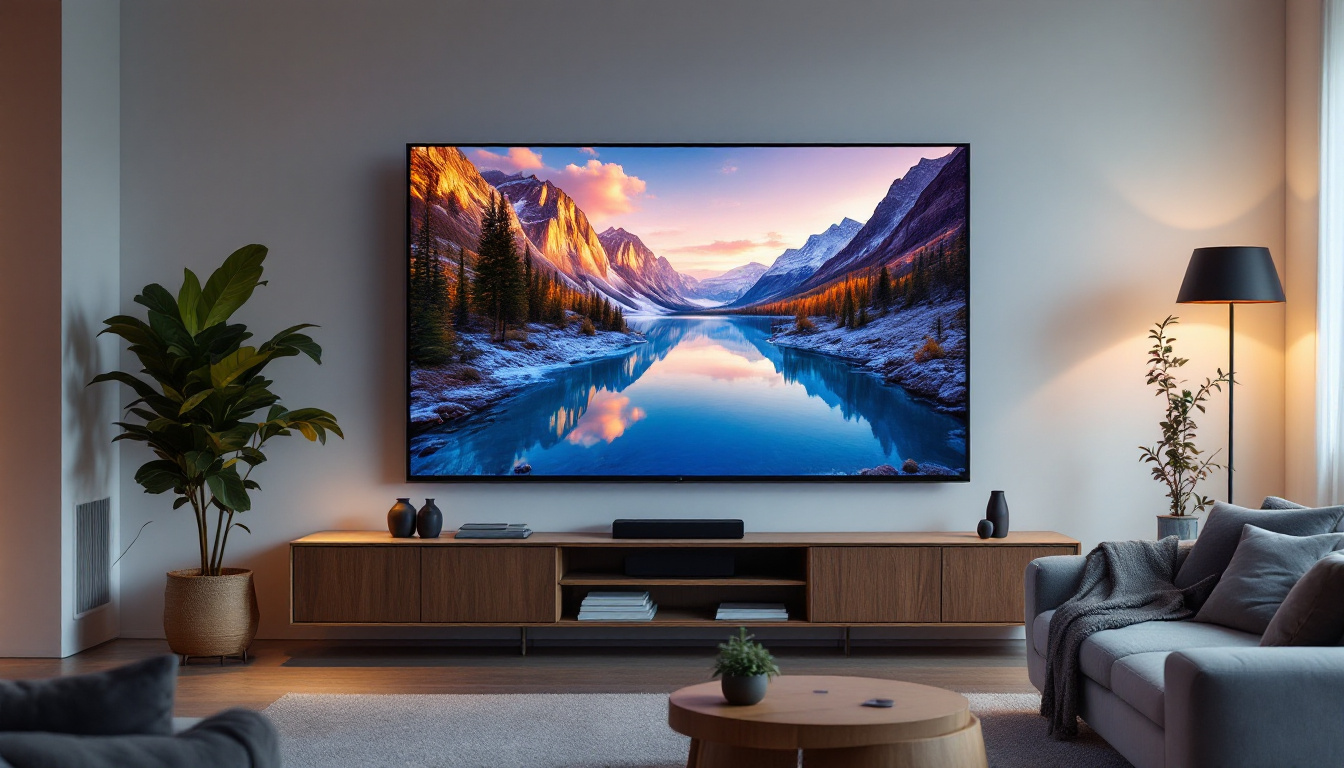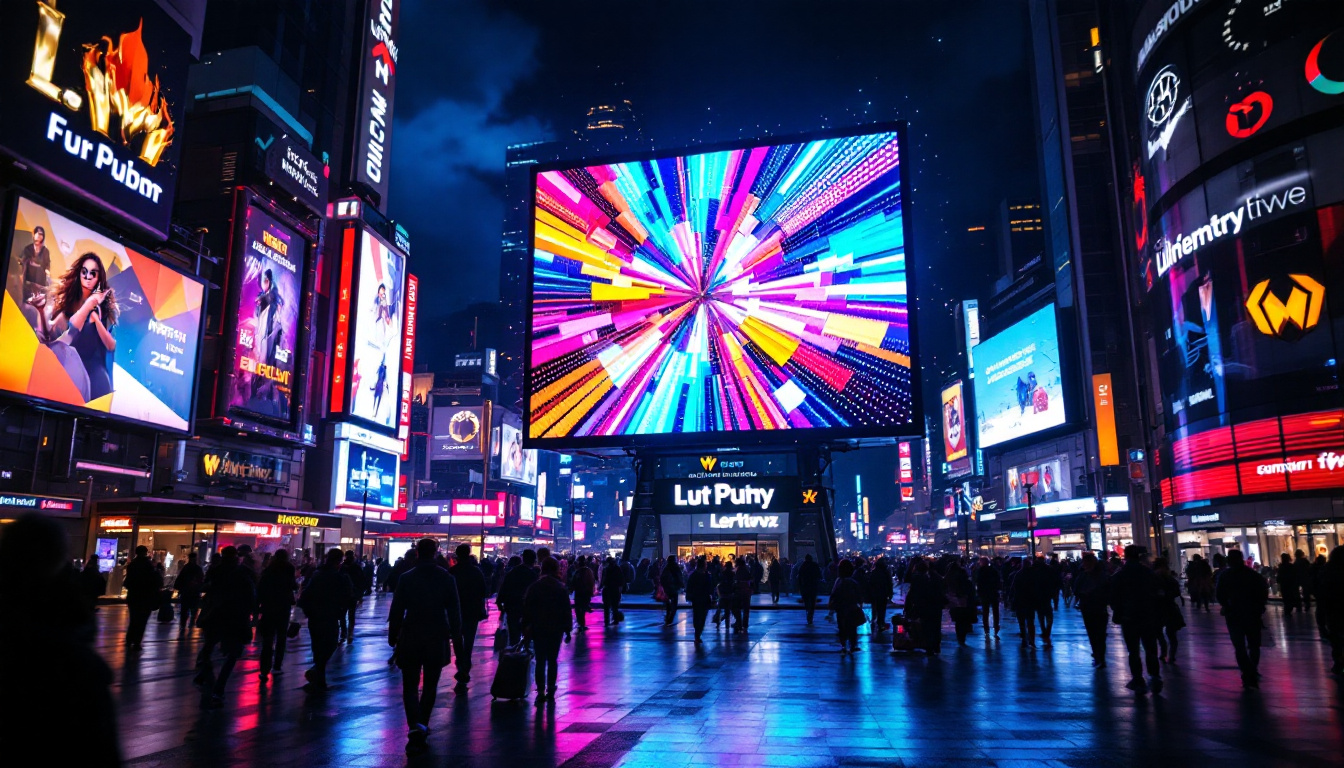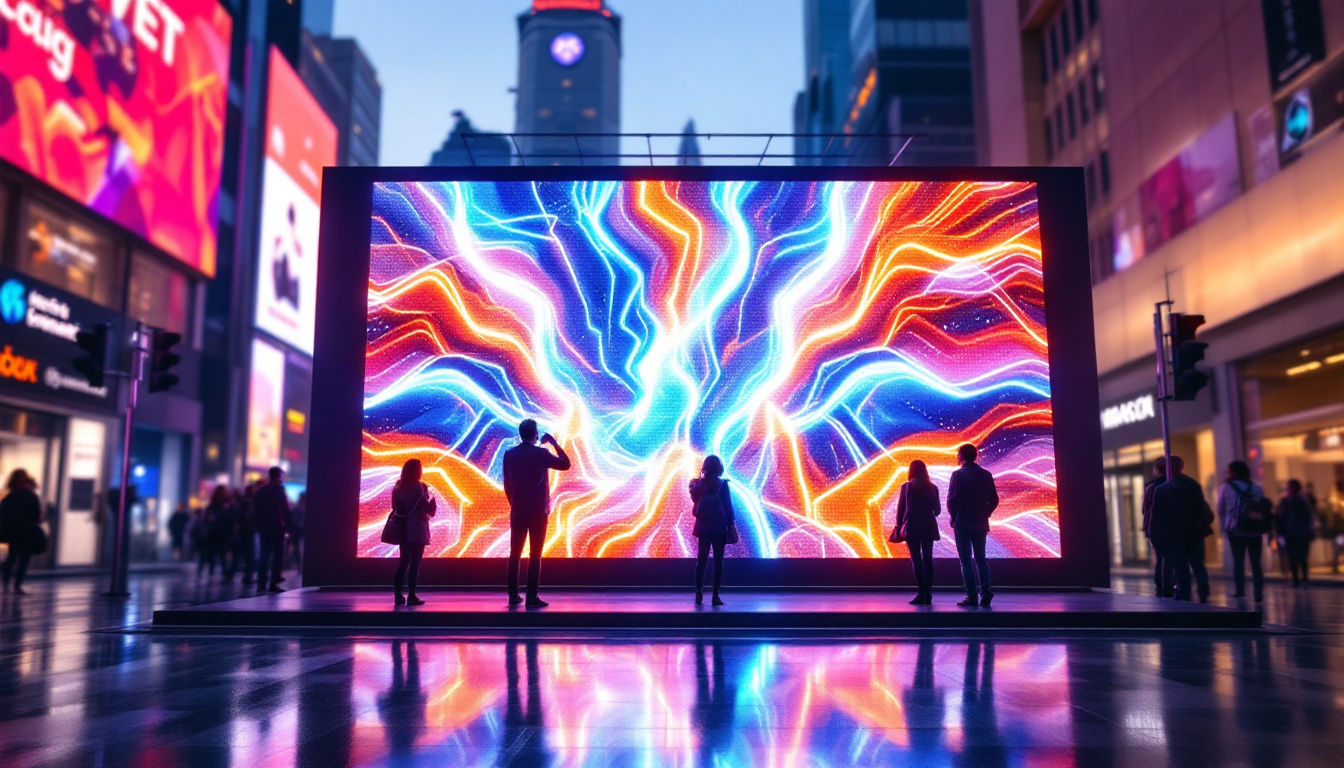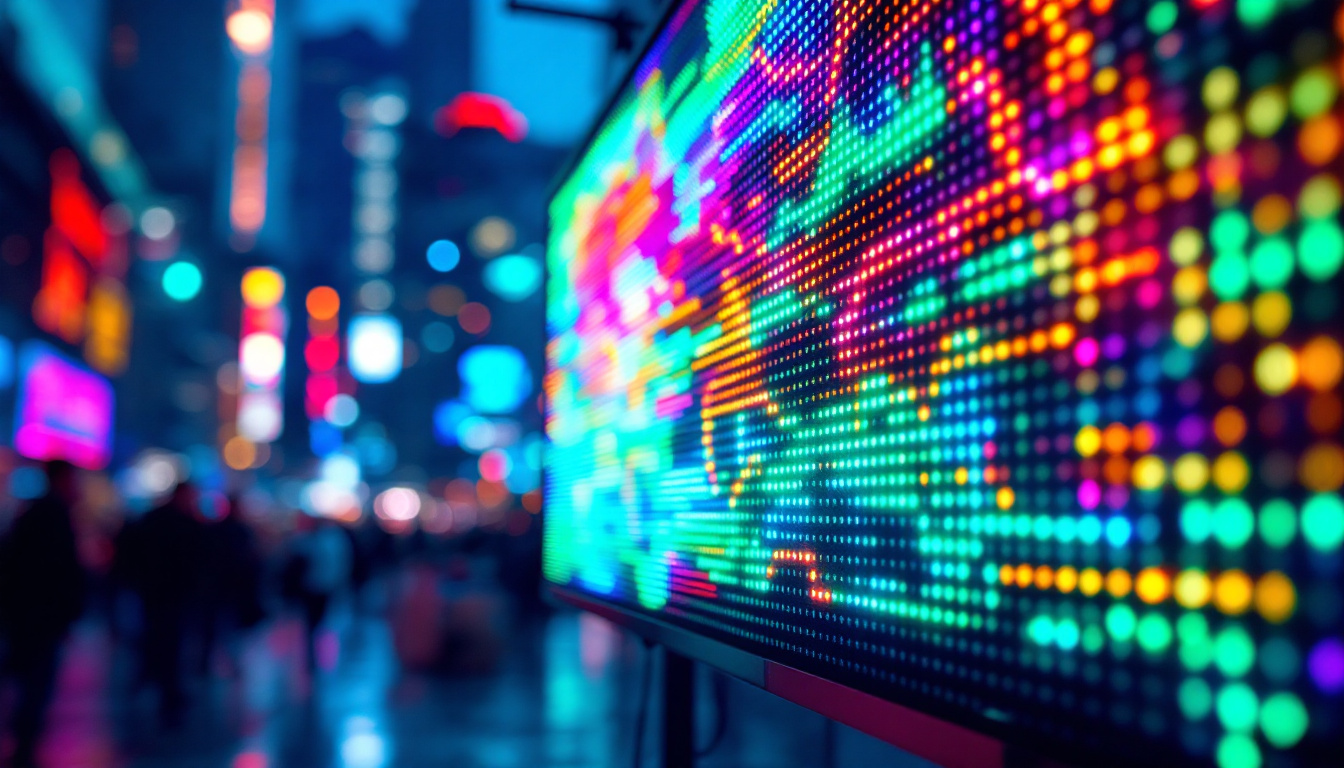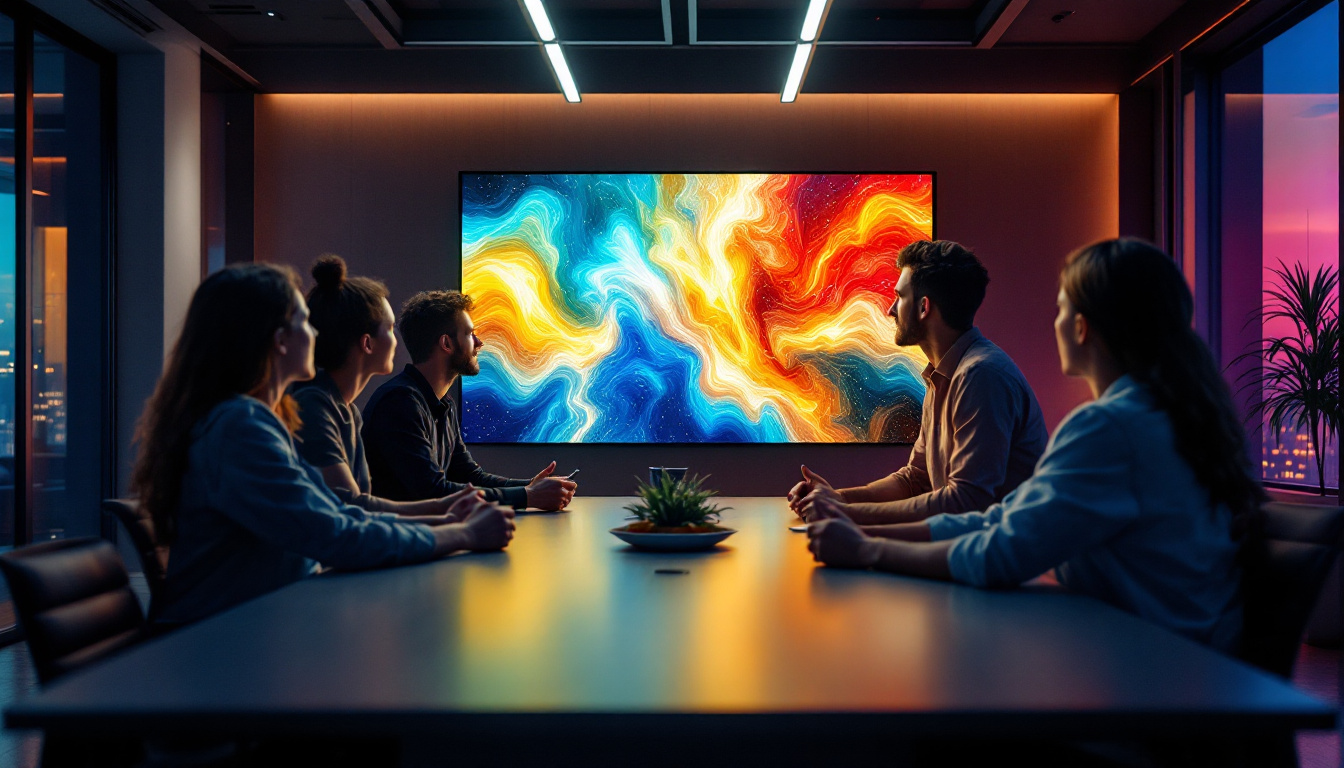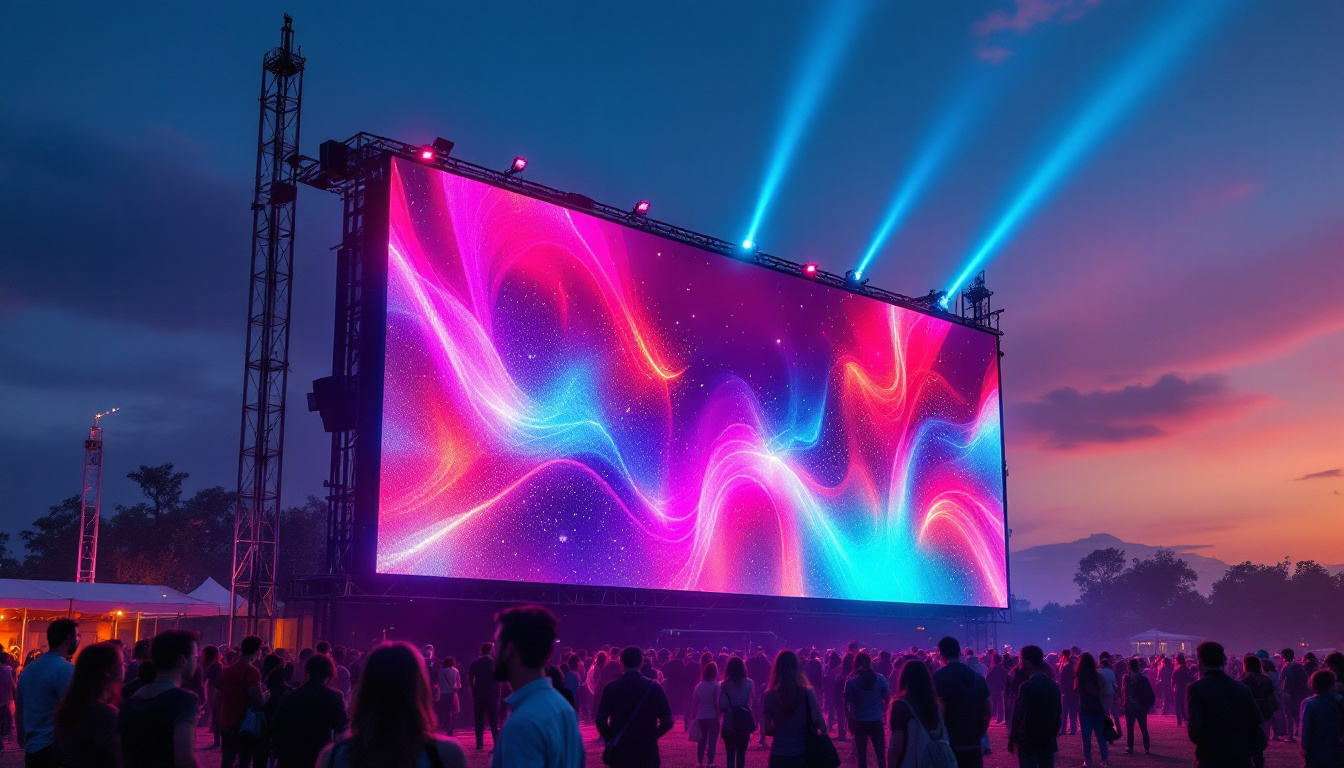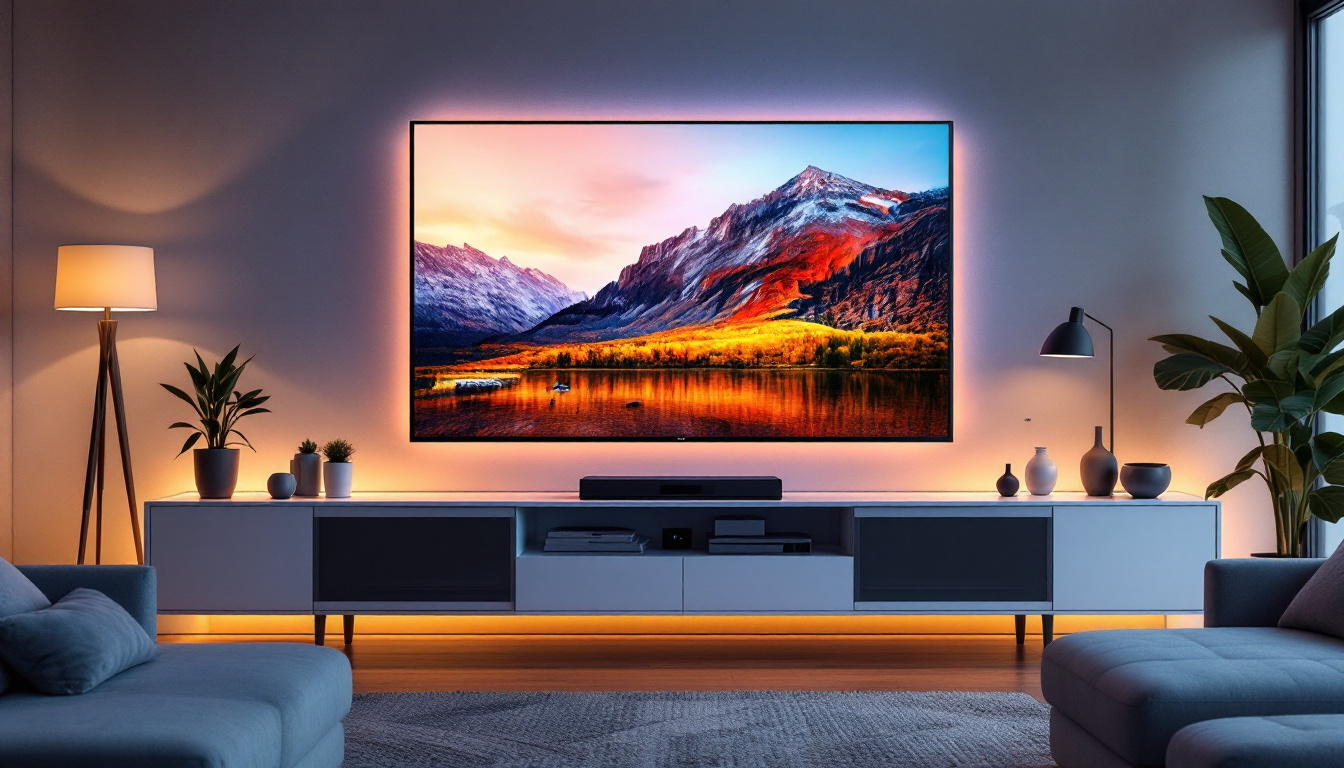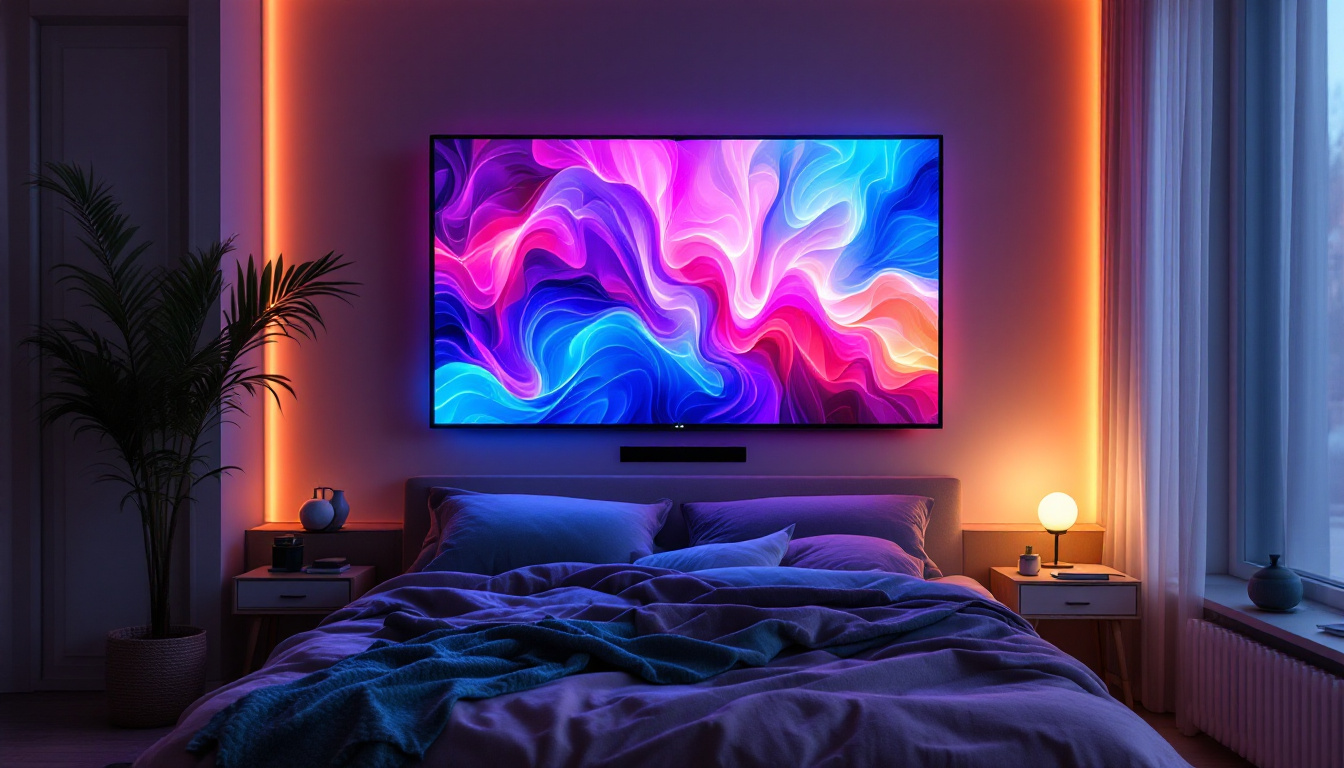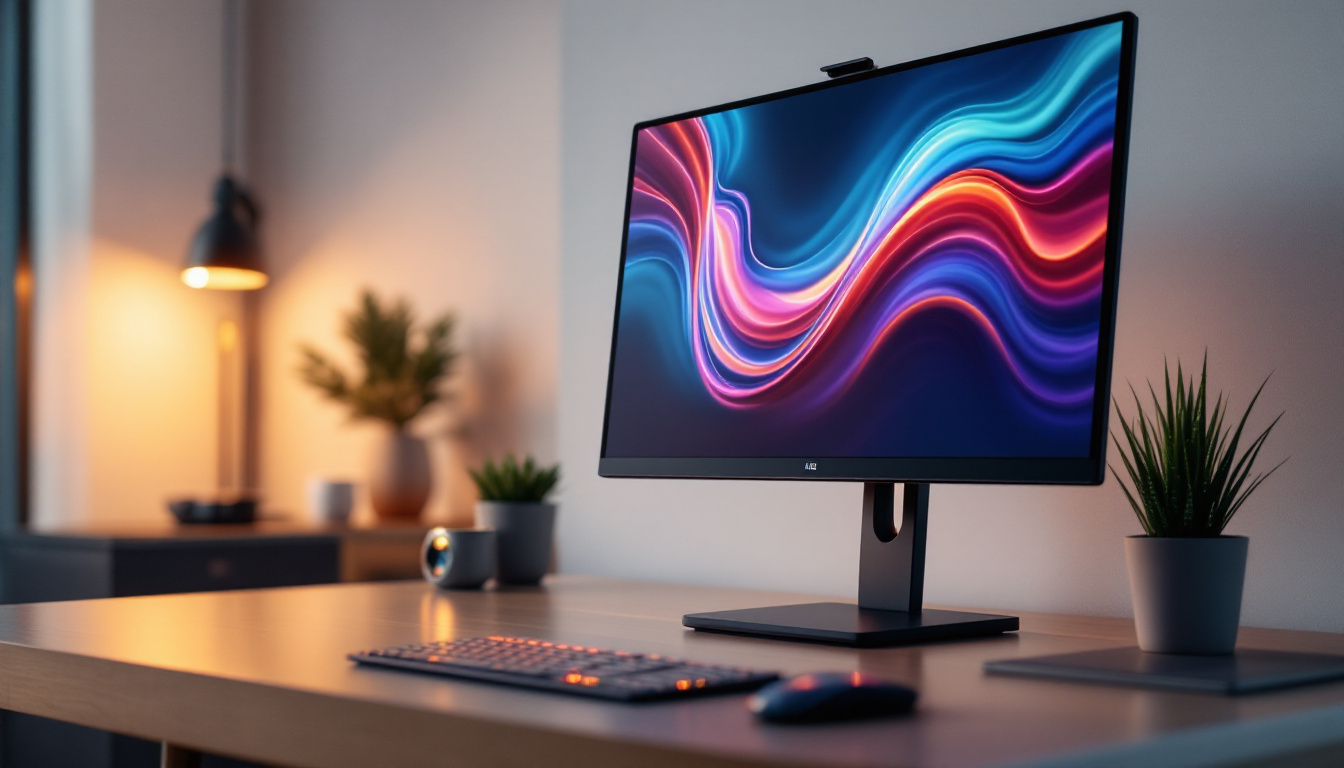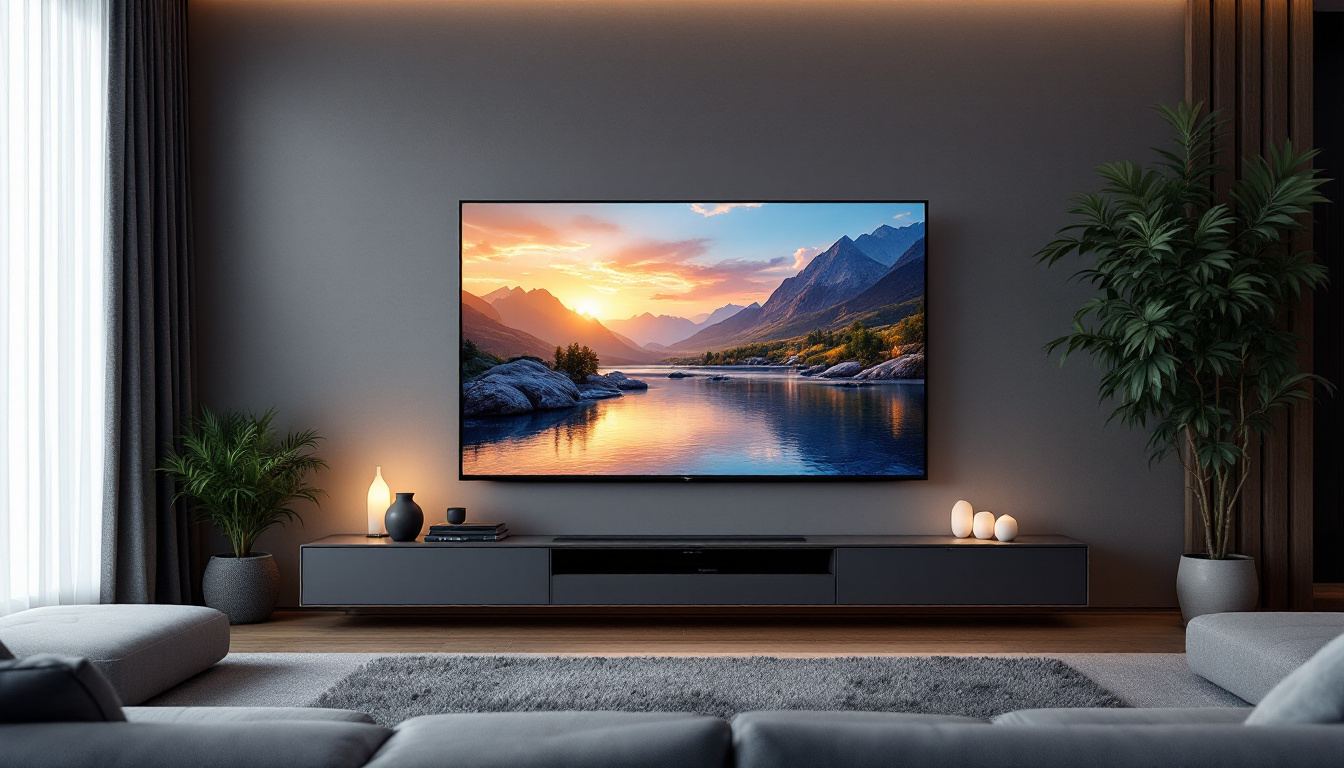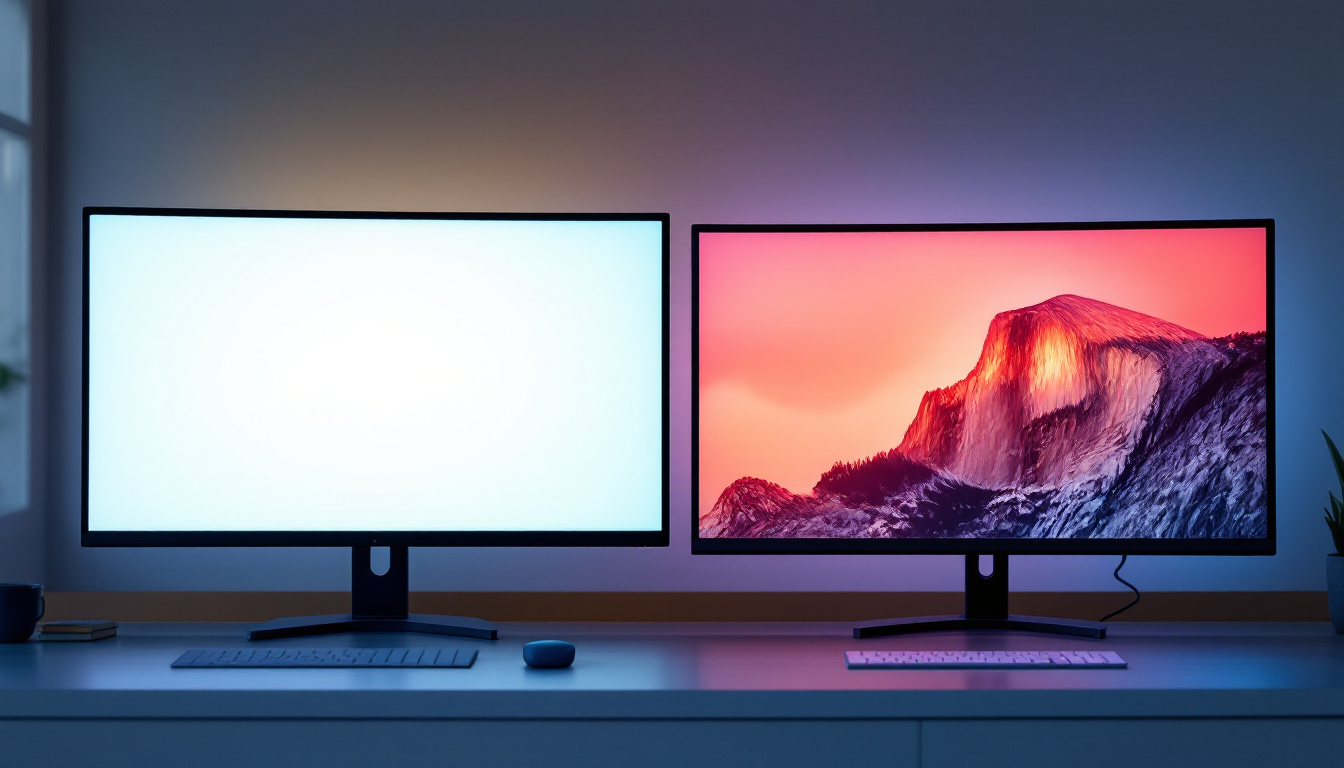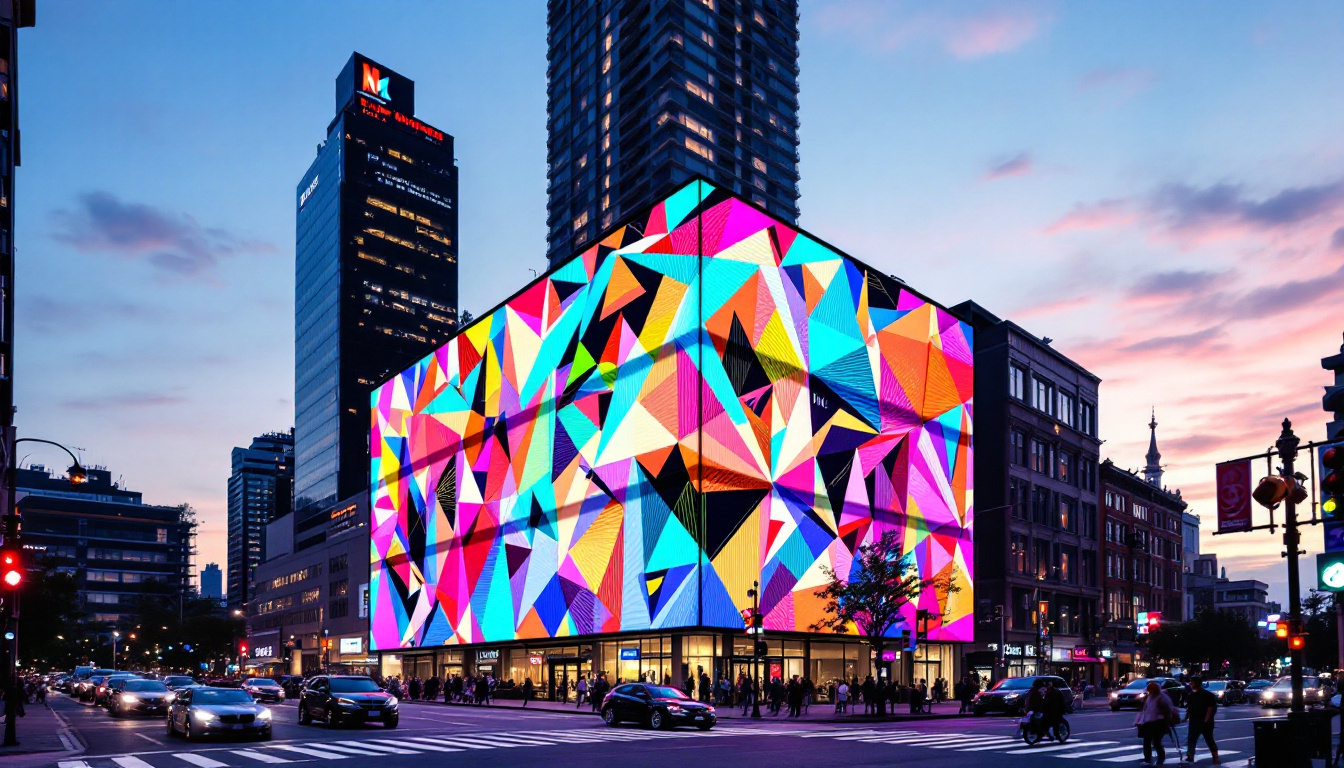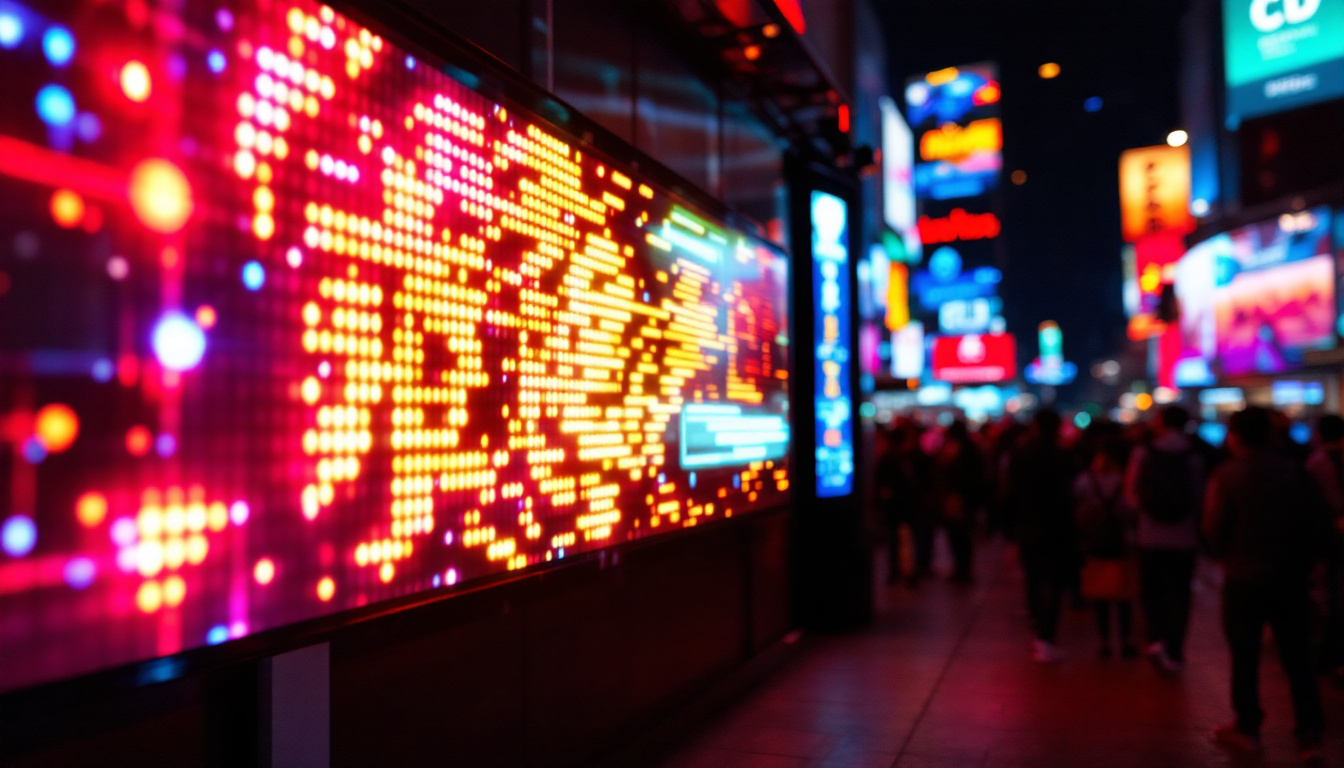In the realm of fine art, the presentation of artwork is just as crucial as the art itself. The evolution of display technologies has brought forth innovative solutions that enhance the viewing experience. Among these technologies, LED displays have emerged as a popular choice for galleries, museums, and art exhibitions. This article delves into the intricacies of LED displays, exploring their benefits, applications, and the impact they have on the fine art sector.
Understanding LED Displays
LED, or Light Emitting Diode, displays are a type of flat panel display technology that utilizes LEDs as a source of light. Unlike traditional LCD displays that require a backlight, LED displays produce their own light, resulting in brighter images and deeper contrasts. This fundamental difference makes them particularly appealing for showcasing fine art.
How LED Displays Work
LED displays consist of an array of tiny light-emitting diodes that create images by illuminating pixels. Each pixel is made up of red, green, and blue (RGB) sub-pixels. By varying the intensity of these colors, the display can produce a wide spectrum of hues and shades. This capability is essential for accurately rendering the colors and details of fine art pieces.
The technology behind LED displays has advanced significantly over the years, leading to improvements in resolution and color accuracy. Modern LED displays can achieve 4K and even 8K resolutions, allowing for stunning clarity that can captivate viewers. Additionally, advancements in color calibration ensure that the artwork is displayed as intended by the artist.
Types of LED Displays
There are several types of LED displays available, each suited for different applications. The most common types include:
- Direct View LED Displays: These displays consist of individual LEDs arranged in a grid, providing high brightness and excellent color accuracy. They are often used in large installations and outdoor settings.
- LED-backlit LCD Displays: These displays utilize LEDs to illuminate an LCD panel. They are commonly found in consumer electronics and offer good color reproduction and energy efficiency.
- Organic LED (OLED) Displays: OLED displays use organic compounds to emit light and can achieve true blacks and vibrant colors. They are often used in high-end televisions and monitors.
Benefits of LED Displays in Fine Art
The adoption of LED displays in fine art settings offers numerous advantages that enhance both the presentation and preservation of artworks. These benefits make LED technology a compelling choice for galleries and exhibitions.
Enhanced Visual Experience
One of the primary benefits of LED displays is their ability to deliver an enhanced visual experience. The brightness and contrast of LED screens allow for artworks to be viewed in a variety of lighting conditions without losing detail. This feature is particularly important in galleries where natural lighting can vary throughout the day.
Moreover, LED displays can reproduce colors with remarkable accuracy, ensuring that the artwork is presented as the artist intended. This fidelity to color and detail helps to engage viewers and create a more immersive experience.
Energy Efficiency and Longevity
LED displays are known for their energy efficiency compared to traditional display technologies. They consume less power, which not only reduces operational costs but also aligns with sustainability goals that many art institutions are striving to achieve.
Additionally, LED displays have a longer lifespan than other display types, often lasting tens of thousands of hours. This durability means that galleries can invest in LED technology without the frequent need for replacements, making it a cost-effective solution in the long run.
Flexibility in Display Options
LED displays offer a high degree of flexibility in terms of size and configuration. They can be customized to fit various spaces, whether it’s a small gallery or a large exhibition hall. This adaptability allows curators to create unique display setups that enhance the overall aesthetic of the space.
Furthermore, LED displays can be used for dynamic presentations, allowing galleries to showcase multiple artworks in a rotating format. This feature can be particularly beneficial for temporary exhibitions, where space is limited and multiple pieces need to be displayed effectively.
Applications of LED Displays in the Art World
LED displays are being utilized in various applications within the art world, transforming how art is presented and experienced. From galleries to public installations, the versatility of LED technology is making a significant impact.
Art Galleries and Museums
In art galleries and museums, LED displays are increasingly being used to present digital art, video installations, and even traditional artworks. The ability to display high-resolution images with vibrant colors makes LED technology an attractive option for curators looking to enhance their exhibitions.
Moreover, LED displays can be integrated with interactive elements, allowing visitors to engage with the artwork in new ways. Touch screens and interactive installations can provide additional context about the pieces, enriching the viewer’s experience and understanding.
Public Art Installations
Public art installations have also embraced LED technology, with artists using large-scale LED displays to create immersive experiences. These installations often incorporate motion graphics, video art, and light displays, captivating passersby and encouraging them to engage with art in a public space.
Such displays can transform urban environments, turning buildings and public squares into canvases for artistic expression. This not only enhances the visual landscape but also fosters a sense of community and cultural engagement.
Virtual and Augmented Reality
As technology continues to evolve, the integration of LED displays with virtual and augmented reality is becoming more prevalent. Artists and curators are exploring how these technologies can enhance the viewing experience, allowing audiences to interact with art in innovative ways.
For instance, LED displays can serve as the backdrop for augmented reality experiences, where viewers can use their smartphones or AR glasses to see additional layers of information or animations overlaid on the artwork. This fusion of technology and art creates a dynamic experience that resonates with modern audiences.
Challenges and Considerations
Despite the many advantages of LED displays, there are challenges and considerations that galleries and institutions must address when implementing this technology. Understanding these factors is crucial for making informed decisions.
Initial Investment Costs
While LED displays offer long-term cost savings due to their energy efficiency and longevity, the initial investment can be significant. Galleries and museums must carefully evaluate their budgets and consider whether the benefits of LED technology justify the upfront costs.
Some institutions may opt for leasing options or phased installations to spread out the expenses. It is essential to conduct a thorough cost-benefit analysis to ensure that the investment aligns with the institution’s goals and audience engagement strategies.
Maintenance and Technical Expertise
LED displays require regular maintenance to ensure optimal performance. This includes cleaning, software updates, and occasional repairs. Institutions must either have in-house technical expertise or establish partnerships with service providers to manage the upkeep of these displays effectively.
Additionally, staff training is crucial to maximize the potential of LED technology. Understanding how to operate and troubleshoot the displays can prevent downtime and ensure that exhibitions run smoothly.
Content Management
Content management is another critical consideration when utilizing LED displays. Curators must develop strategies for creating and updating content regularly to keep exhibitions fresh and engaging. This may involve collaboration with artists, graphic designers, and multimedia specialists to produce high-quality visuals that resonate with viewers.
Moreover, the digital nature of LED displays means that institutions must also consider copyright and licensing issues when displaying artworks. Proper permissions and attributions are essential to respect the rights of artists and ensure ethical practices in the art world.
The Future of LED Displays in Fine Art
The future of LED displays in the fine art sector appears promising, with ongoing advancements in technology and creative applications. As artists and institutions continue to explore the possibilities of LED technology, several trends are emerging that may shape the future landscape of art presentation.
Integration with Smart Technology
The integration of LED displays with smart technology is likely to become more prevalent. This includes the use of sensors, AI, and data analytics to create personalized experiences for viewers. For example, smart displays could adjust brightness and color settings based on the ambient lighting conditions or even tailor content based on audience demographics.
This level of interactivity could lead to more engaging exhibitions, where viewers feel a deeper connection to the art. By leveraging technology, galleries can create unique experiences that resonate with diverse audiences.
Sustainability and Eco-Friendly Practices
As the art world increasingly prioritizes sustainability, LED displays can play a vital role in promoting eco-friendly practices. The energy efficiency and longevity of LED technology align with the growing emphasis on reducing the carbon footprint of art institutions.
Furthermore, artists are exploring how to incorporate sustainable materials and practices into their digital artworks, creating a dialogue about environmental issues. This synergy between technology and sustainability can lead to innovative solutions that benefit both the art community and the planet.
Continued Innovation in Display Technology
As display technology evolves, new innovations are likely to emerge, further enhancing the capabilities of LED displays. Advancements in resolution, color accuracy, and interactivity will continue to push the boundaries of what is possible in art presentation.
Artists and curators will undoubtedly find new ways to utilize these advancements, leading to exciting and unexpected forms of artistic expression. The ongoing dialogue between technology and art will continue to inspire creativity and innovation in the fine art sector.
Conclusion
LED displays have revolutionized the way fine art is presented and experienced. Their ability to deliver stunning visuals, energy efficiency, and flexibility in application makes them an invaluable tool for galleries, museums, and public art installations. While challenges exist, the benefits far outweigh the drawbacks, paving the way for a future where art and technology coexist harmoniously.
As the art world continues to embrace LED technology, the possibilities for creative expression and audience engagement are limitless. With ongoing advancements and a commitment to sustainability, LED displays will undoubtedly play a pivotal role in shaping the future of fine art presentation.
Explore the Future of Art Presentation with LumenMatrix
Embrace the transformative power of LED technology in your gallery or exhibition space with LumenMatrix. As a leader in innovative LED display solutions, we offer a diverse range of products including Indoor and Outdoor LED Wall Displays, Vehicle LED Displays, LED Poster Displays, LED Sports Displays, Floor LED Displays, Custom LED Displays, All-in-One LED Displays, and LED Transparent Displays. Our mission is to revolutionize visual communication, ensuring your artwork makes a lasting impression. Check out LumenMatrix LED Display Solutions today and step into a world where fine art and cutting-edge technology converge to create unforgettable visual experiences.

